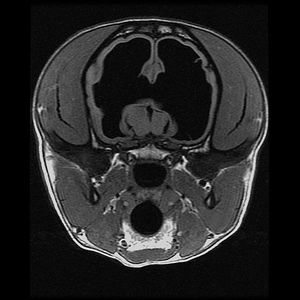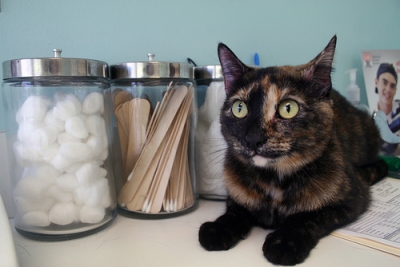
Canine Hydrocephalus is generally a hereditary condition. It can be congenital, meaning a pup is born with it. Brain injuries, infections, tumors, poison can also cause hydrocephalus. The word Hydrocephalus is from the Greek – hydro meaning water and cephalus concerning the head – hence the expression, water in the head.
Hydrocephalus is the accumulation of excess cerebrospinal fluid. It can be caused by an obstruction to the flow, too much fluid, inability to reabsorb the fluid. It is generally seen in small breed dogs.
Some obvious signs of Hydrocephalus are depression, knuckling of the feet, circling, head tilting, problems with gait, paralysis, impaired vision and/or hearing, excessive sleeping, seizures.
If your dog shows any of these symptoms, he should be seen by a veterinarian. Your vet will give your dog a thorough examination and probably order x-rays.
Treatment includes administering drugs – diuretics to remove excess fluid and steroids to reduce inflammation and swelling. With surgery, temporary or permanent tubes are inserted to drain the excess fluid. Prognosis is poor, especially when serious neurological symptoms appear.
Some unscrupulous breeders continue to breed dogs for the dome-shaped head look even though it’s an indication of a serious problem, thus continuing the development of Hydrocephalus in dogs at risk. When you purchase a dog look for any signs of the disease. Thoroughly check out the breeder to make sure the pups have a clean bill of health.
While any breed can develop Hydrocephalus, toy breeds such as Chihuahua, Pekingese, Maltese, Yorkshire Terrier and Pomeranian are prone to the disease.



